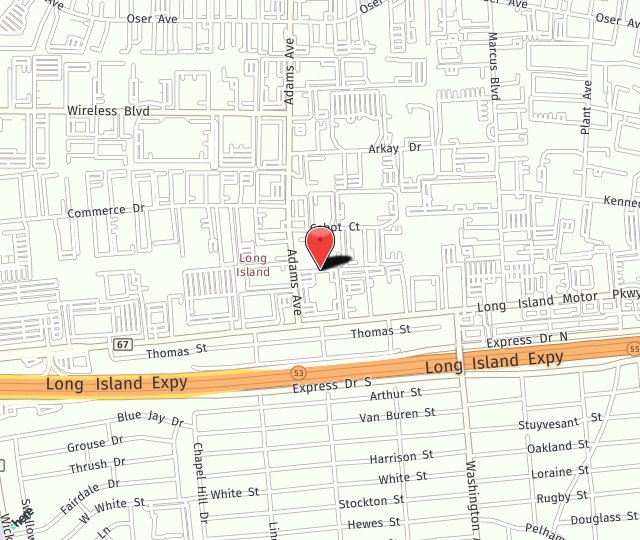*Individual results may vary
Why Botox®?
Whenever we use the muscles of our face to give expression to our emotions (smile, laugh, and frowning), we develop lines, furrows, and wrinkles in our skin. This is most noticeable around the eyes, the mouth, the forehead and especially between the eyebrows. As these lines and wrinkles worsen, we begin to look sad, angry, tired or old. BOTOX® Cosmetic treatments can not only prevent you from deepening these lines during natural facial movements, but they can also help reverse these marks of aging, leaving you looking younger and more refreshed.
What is BOTOX® Cosmetic?
BOTOX® Cosmetic is a highly purified protein injected into the skin to relax the muscles that cause wrinkles due to repeated facial expressions, such as in the forehead. It binds to the muscle and prevents the nerves from sending signals to the muscle to contract. The onset of action is usually a few days to two weeks after treatment and the duration of action is typically from three to four months. Not all wrinkles in the face are amenable to treatment with Botox; however, those due to excessive contraction of the muscles of facial expression often are improved after the administration of Botox. For instance, Botox will not correct lines due to loss of volume or gravitational sagging of tissues such as the nasolabial folds (the “parentheses” between the cheek and upper lip) and the marionette or “puppet lines”. These lines are better treated with fillers to restore volume, and occasionally, surgery.
What does BOTOX® Cosmetic correct?
BOTOX® Cosmetic is the most popular cosmetic procedure in the United States and certainly one of our most requested procedures. Safe, quick and effective, BOTOX® produces results with no downtime or surgery and little to no discomfort. Through a series of tiny injections, BOTOX® affords you a refreshed look and feel, smoothing lines, sculpting the face, and even resolving migraines and excessive sweating.
Facial Lines and Wrinkles
Botox is most commonly used to treat facial lines and wrinkles. Botox reduces facial lines and wrinkles for three to four months (infrequently longer) with no downtime and little to no discomfort. Botox gives you a rejuvenated look by smoothing worry lines around the mouth, frown lines between the eyebrows, crow’s feet beneath the eyes, horizontal lines across the forehead, and lines on the neck.
Facial Sculpting and Elevation of Facial Structures
Botox can also be used to sculpt the face by selectively relaxing specific facial muscles that position facial structures in an undesirable place. For example, the outer eyebrows and corners of them mouth can be elevated by relaxing the depressor muscles that pull them down.
Headaches
In addition to smoothing out fine lines and wrinkles, Botox may be useful for treating migraine headaches, excessive sweating, chronic back and jaw pain, and muscle spasms.
Excessive Underarm Perspiration
Patients who suffer from severe underarm perspiration that does not respond to conventional over the counter treatments may be a candidate for treatment with Botox. For this particular problem, the duration of effect of the Botox is typically 5 – 6 months. Patient satisfaction is usually quite high after this procedure.
Treating Migraine Headaches With Botox
View Our Photo Gallery
BOTOX® Injection Sites
Although originally approved by the U.S. Food and Drug Administration for the treatment of eye and muscle spasms, BOTOX Cosmetic was quickly recognized for its cosmetic value. Properly placed injections of BOTOX Cosmetic block nerve impulses sent to muscles, weakening them to the point where they cannot contract, and temporarily eliminating moderately severe furrows and lines. BOTOX Cosmetic is used to treat the following:
- Forehead furrows
- Frown lines
- Crow’s feet
- Skin bands on the neck
How BOTOX® works
Botox is injected directly into muscle to be treated. Botox is injected just under the surface of the skin. The amount given is measured in “units” rather than by weight (i.e. milligrams). Sometimes a topical anesthetic (ELA-Max) is applied to the skin prior to injection. A very small needle (30 gauge) is used for injection to minimize discomfort. Most treatments usually take only a few minutes. The duration of action is proportional to the dose of Botox given, although there is a point where the effect reaches a plateau, or in other words, administration of higher doses of Botox does not increase the duration of effect. The maximum duration is typically three to four months.
Botox is the brand name for botulinum toxic A, a therapeutic muscle-relaxing agent derived from the bacteria Clostridium Botulinum. Originally approved by the FDA for the treatment of eye muscle spasms, Botox was quickly recognized for its cosmetic value.
Physicians have been using Botox for years as a treatment to correct visible signs of stress and aging. The medication relaxes the muscles in the face that cause wrinkles. When injected in small doses in specific areas, Botox injections block nerves from sending stimuli to the muscles responsible for the contractions that cause fine lines and wrinkles. In this way, Botox smoothes the lines in the skin that make you look sad, tired or angry.
Am I a candidate for BOTOX®?
A good candidate for Botox treatment may be anyone looking to enhance their appearance by getting rid of unwanted lines or wrinkles. It is also important that patients seeking treatment with Botox are in good physical health, are not pregnant or nursing, and do not have a neuromuscular disorder.
Both men and women considering Botox treatment should have realistic expectations of what the procedure can do. You should discuss the desired results with Dr. Epstein to ensure that your goals can be achieved.
BOTOX® Cosmetic Procedure
Using a very fine needle, Dr. Epstein will inject Botox into the specific muscles in your face that are causing the unwanted lines and wrinkles. Great care is taken so as to not block all the muscles of facial expression, so that you may still express your emotions as you desire. You may experience brief, mild discomfort during the injection, but you can be assured that the treatment is very safe and effective. Taking only a few minutes, Botox treatment requires no anesthetic, although some people do prefer to use a topical cream anesthetic. Recovery is immediate, allowing you to return to work and resume your normal daily activities that same day.
Botox Before and After


View more Before and After photos here.
See What Our Patients Are Saying…
"I would not go anywhere else for any Facial Treatments as practice is Top Notch. All of my Facial Treatments have been performed by highly educated medical professionals that Can do Botox etc. with College Degrees and not minimal hours long workforce training with multiple easy certificates and on the job training. <3<3 They offer a wide array of Spa services to suit your needs!"
"I have been going to Dr. Mark Epstein for over 5 years for Botox injections. He is a wonderful Plastic Surgeon and very knowledgeable. I love the results from my injections. His staff is very friendly and helpful and make you feel comfortable every time you walk in the door. It is always a pleasure when I have an appointment."
How many BOTOX® Injections will I need?
Everyone varies as to how much Botox they require. Some individuals are more sensitive to it than others. All treatments are customized to the needs of the patient. Sometimes adjustments need to be made with future treatments, either increasing or decreasing the treatment doses based on response to the previous treatment. For this reason, Dr. Epstein maintains detailed “injection records” for future reference. The appearance and function of your face will revert to what it was prior to treatment. The duration of effect with Botox is temporary. Botox can be used every 3-4 months, depending on how the muscles respond.
What medications to avoid prior to treatment?
It is recommended that for ten days prior to treatment, you avoid any medications that might thin your blood and make you more likely to bleed. This includes aspirin, non-steroidal anti-inflammatory agents such as Motrin (Ibuprofen) and Naprosyn. If you are on blood thinners such as Coumadin or Heparin, you must notify us immediately. Medications used to treat such common conditions as high blood pressure, diabetes, asthma, allergies, heart disease, high cholesterol, thyroid problems, oral contraceptives, and antibiotics should not pose a problem. If you have a question about a particular medication, ask us!
Do BOTOX® Injections hurt?
The needles for Botox are much smaller than those used for collagen; patients are often surprised at how little discomfort Botox injections cause. There is mild discomfort from the tiny needles. Some patients prefer topical anesthetics to diminish the level of discomfort.
Bruising after a Botox treatment is uncommon, but can occur. Usually the bruises are very small and resolve in a day or two. Most times there is no bruising. There may also be some swelling or redness, but this is again uncommon. You may see little red dots at the injection sites, but we have found that application of Remergent® Microcirculation cream at the time of treatment seems to help this considerably. Many people do choose to have treatments in the middle of their busy work/social schedule for the day. If you have a special event and absolutely cannot afford a bruise on your face, you may wish to make sure your treatment is done no sooner than one week prior to the event.
The Importance of Choosing a Qualified Physician
Even though Botox is not a surgical procedure, it is very important to choose a highly experienced and qualified physician when deciding to undergo BOTOX® treatments. Doctors who are less familiar with the technique could leave you looking “frozen” or perpetually surprised. Dr. Epstein is intimately familiar with Botox, having successfully treated hundreds of patients at his office. Not only that, but he will also take the time to talk with each patient before beginning the injections to find out what he or she wants to achieve and to determine how best to correct their problem area(s), so patients can be happy again with their smoother, younger-looking faces.
Risks and Side Effects of Botox®
Side effects of Botox are rare and are usually mild and temporary. The most common side effects caused by Botox are headaches and temporary redness or bruising of the skin at the site of injection. In rare cases, slight drooping of an eyelid or asymmetry of expression may occur. Eyelid drooping can be treated with eye drops for a few days. Sometimes, asymmetry can be treated with additional Botox on the other side of the face. Fortunately, complications and problems with Botox are very infrequent in Dr. Epstein’s experience.
The most common side effect is a mild amount of droopiness in an eyelid (“sleepy” eye) that lasts about 10 days without treatment but can be treated in the interim with eye drops. This is a rare occurrence. As with any time you receive an injection anywhere in your body, a small bruise is possible.
- Pain
- Infection
- Inflammation
- Tenderness
- Swelling
- Redness
- Bleeding
- Bruising
Botox® Cosmetic Results
Immediately following the Botox treatment, some patients may experience mild bruising, which will go away shortly. You will see your wrinkles begin to fade within 24 hours, with continued improvement over the next 5 days. The effects of Botox typically last up to four months*, although many have reported results lasting longer. After several Botox treatments, the results may be prolonged. It is best to keep up with your treatments at regular three to four-month intervals. As the muscles relax, they begin to atrophy. In three to four months, when the Botox wears off, the muscles begin to build their bulk back again and produce more facial lines. If the muscles get another Botox treatment as the last treatment wears off, then the process of the muscles bulking up again is prevented.
Botox treatment will relax the muscles in your face and soften the skin, giving you a more relaxed and youthful appearance. For optimum results, many patients choose to use Botox in conjunction with a facelift, skin rejuvenation therapy, and/or microneedling.
What can I expect after my Botox® treatment?
There should not be any significant discomfort. Occasionally, you may see a small amount of bruising. Infrequently, when the forehead is treated, there may be some temporary drooping of the eyebrows, but this usually resolves in about two weeks. Also infrequently, when the lips are treated, there may be some difficulty in pursing the lips.
When properly performed, there should be no overall significant change to your expression. Botox will permit adjustments to your appearance to make you look more youthful and refreshed. You should still be able to animate your face. You may have difficulty when trying to look angry.
There really are no restrictions after your treatment. You may resume your normal activities as you desire.
When do I return for a follow-up visit?
It is recommended that you return to our office two weeks after your treatment. If any adjustments need to be made, they can be done at that time. If you are on “maintenance” and have had similar treatments by us before, then you can return in three to four months for your next treatment.
When a muscle is relaxed by Botox, it begins to atrophy. It is best to re-treat just as function begins to return to the muscle, while the muscle is still atrophied. Repeating treatments every 3 to 4 months usually accomplishes this goal.
Who should not have Botox®?
Women who are pregnant, breastfeeding or who hope to become pregnant, and people who are taking certain antibiotics, have neuromuscular disorders or an allergy to Botox should not have injections. Although quite rare, if previously you have had any untoward reaction to Botox, you should not undergo treatment with Botox. Patients with certain neuromuscular disorders such as ALS, myasthenia gravis, or Lambert-Eaton syndrome may be at increased risk of serious side effects. There is a small minority of people who either don’t respond well to Botox or develop a resistance to it. These people should not pursue treatment with Botox.
Schedule A Consultation Today!
If you’re interested in learning more about BOTOX® Cosmetic please contact us for a consultation at 631-638-6800 or fill out the form below. We will discuss your needs and concerns, and determine your best course of action.




